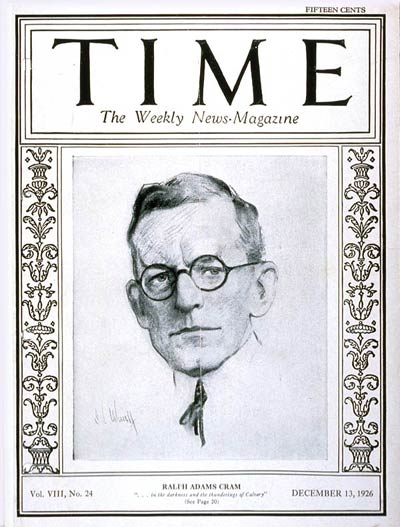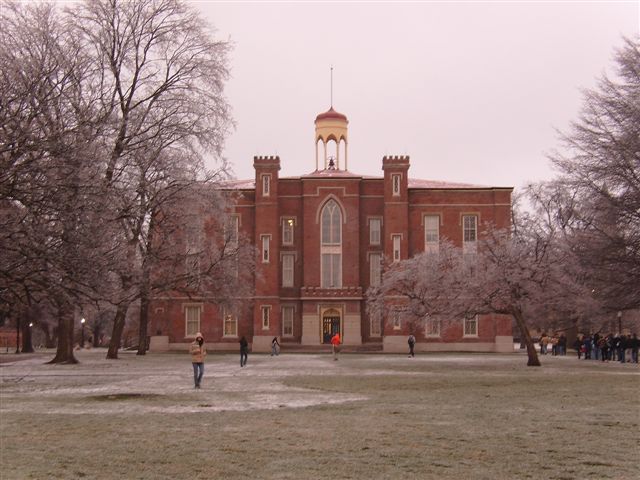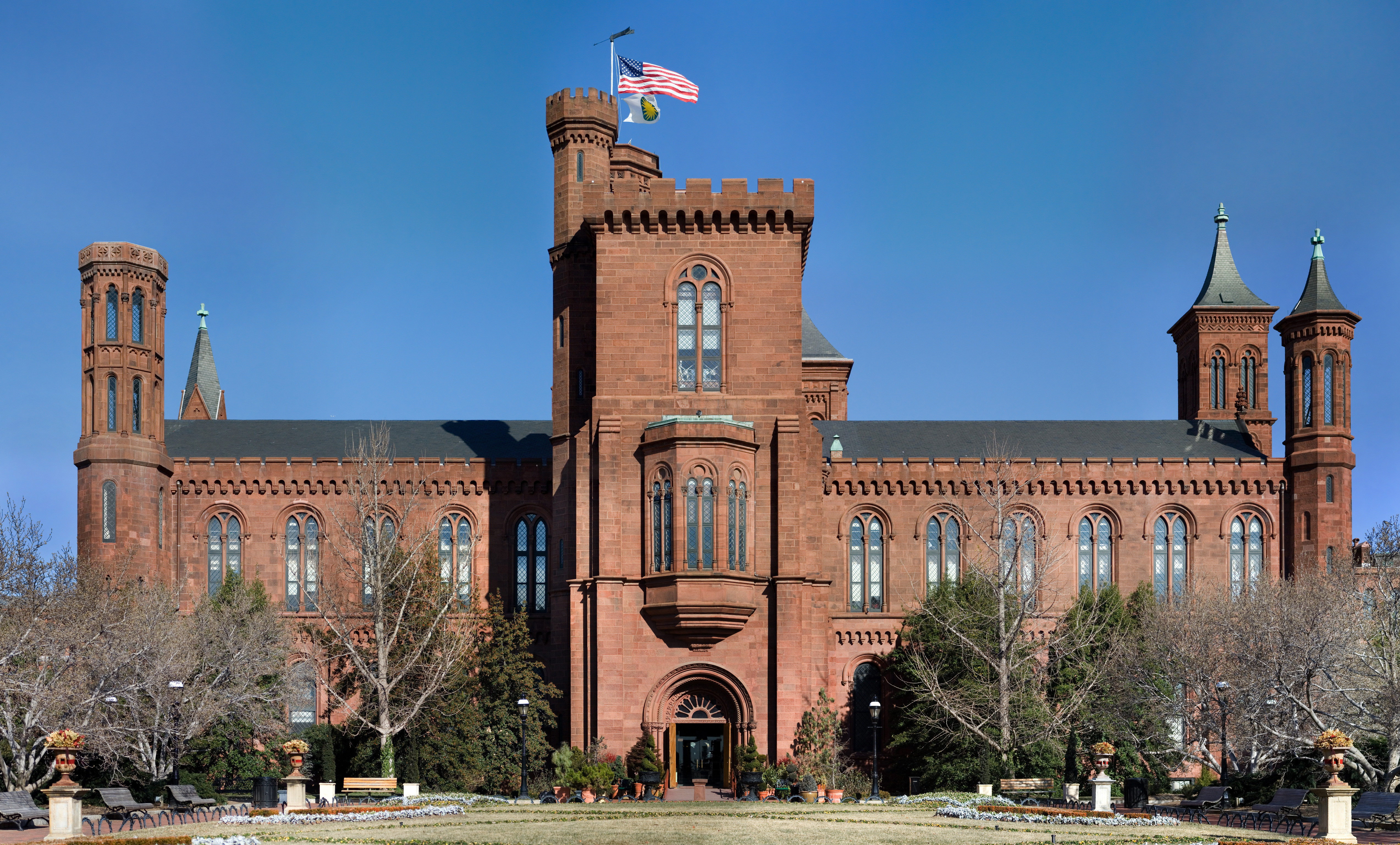|
Collegiate Gothic Architecture
Collegiate Gothic is an architectural style subgenre of Gothic Revival architecture, popular in the late-19th and early-20th centuries for college and high school buildings in the United States and Canada, and to a certain extent Europe. A form of historicist architecture, it took its inspiration from English Tudor and Gothic buildings. It has returned in the 21st century in the form of prominent new buildings at schools and universities including Princeton and Yale. Ralph Adams Cram, arguably the leading Gothic Revival architect and theoretician in the early 20th century, wrote about the appeal of the Gothic for educational facilities in his book ''Gothic Quest:'' "Through architecture and its allied arts we have the power to bend men and sway them as few have who depended on the spoken word. It is for us, as part of our duty as our highest privilege to act...for spreading what is true." History Beginnings Gothic Revival architecture was used for American college buil ... [...More Info...] [...Related Items...] OR: [Wikipedia] [Google] [Baidu] |
Cornell West Campus Dormitories
Cornell University is a Private Ivy League university, private Statutory college, statutory Land-grant university, land-grant research university based in Ithaca, New York. It is a member of the Ivy League. Founded in 1865 by Ezra Cornell and Andrew Dickson White, Cornell was founded with the intention to teach and make contributions in all fields of knowledge—from the classics to the sciences, and from the theoretical to the applied. These ideals, unconventional for the time, are captured in Cornell's founding principle, a popular 1868 quotation from founder Ezra Cornell: "I would found an institution where any person can find instruction in any study." Cornell is ranked among the top global universities. The university is organized into seven Undergraduate education, undergraduate colleges and seven graduate school, graduate divisions at its main Ithaca campus, with each college and division defining its specific admission standards and academic programs in near autonomy ... [...More Info...] [...Related Items...] OR: [Wikipedia] [Google] [Baidu] |
Ralph Adams Cram
Ralph Adams Cram (December 16, 1863 – September 22, 1942) was a prolific and influential American architect of collegiate and ecclesiastical buildings, often in the Gothic Revival style. Cram & Ferguson and Cram, Goodhue & Ferguson are partnerships in which he worked. Cram was a fellow of the American Institute of Architects. Early life Cram was born on December 16, 1863, at Hampton Falls, New Hampshire, to William Augustine and Sarah Elizabeth Cram. He was educated at Augusta, Hampton Falls, Westford Academy, which he entered in 1875, and Phillips Exeter Academy. At age 18, Cram moved to Boston in 1881 and worked for five years in the architectural office of Rotch & Tilden, after which he left for Rome to study classical architecture. From 1885 to 1887, he was art critic for the ''Boston Transcript''. During an 1887 Christmas Eve mass in Rome, he had a dramatic conversion experience. For the rest of his life, he practiced as a fervent Anglo-Catholic who identified as high-ch ... [...More Info...] [...Related Items...] OR: [Wikipedia] [Google] [Baidu] |
Old Main, Knox College
Old Main is the oldest building on the campus of Knox College in Galesburg, Illinois. Completed in 1857, it is a distinctive Gothic Tudor design of Swedish architect Charles Ulricson. It was designated a National Historic Landmark in 1961 as one of the few surviving sites to host one of the famous 1858 Lincoln–Douglas debates. The building underwent a major restoration in the 1930s, which modernized its interior and restored its exterior.. Description and history Old Main is located on the north side of the Knox College campus, south of South Street between Alumni Hall and George Davis Hall. It is a three-story masonry structure, built out of brick with limestone and concrete trim. It is designed in part to resemble England's Hampton Court Palace, with a pair of projecting polygonal towers topped by crenellated parapets flanking its main entrance. The entrance is itself in a projecting section, in a rounded-arch opening set beneath a tall Gothic-arched window. Lim ... [...More Info...] [...Related Items...] OR: [Wikipedia] [Google] [Baidu] |
Charles Ulricson
Charles L. Ulricson (1816, Stockholm, Sweden – 1887, Peoria, Illinois) was a Swedish-born American architect, who practiced in Peoria, Illinois. He is best known for designing Old Main (1856–57) – the principal building at Knox College, Galesburg, Illinois – now a National Historic Landmark. Biography The son of Carl Ulricson, architect to the Swedish crown, he graduated from the Royal Institute of Architects in Stockholm.. Following his father's death, he emigrated to the United States in 1835, initially settling in New York City. He was employed by the architect Alexander Jackson Davis for about four years, where he worked on University Hall (1833–37, demolished 1890) for New York University. Searching for a place to set up his own practice, he traveled through the American South before settling in Peoria, Illinois, about 1844. Ulricson established a successful practice in Peoria, designing and often acting as contractor for commercial buildings and ... [...More Info...] [...Related Items...] OR: [Wikipedia] [Google] [Baidu] |
Hampton Court Palace
Hampton Court Palace is a Grade I listed royal palace in the London Borough of Richmond upon Thames, southwest and upstream of central London on the River Thames. The building of the palace began in 1514 for Cardinal Thomas Wolsey, the chief minister of Henry VIII. In 1529, as Wolsey fell from favour, the cardinal gave the palace to the king to check his disgrace. The palace went on to become one of Henry's most favoured residences; soon after acquiring the property, he arranged for it to be enlarged so that it might more easily accommodate his sizeable retinue of courtiers. Along with St James' Palace, it is one of only two surviving palaces out of the many the king owned. The palace is currently in the possession of King Charles III and the Crown. In the following century, King William III's massive rebuilding and expansion work, which was intended to rival the Palace of Versailles, destroyed much of the Tudor palace.Dynes, p. 90. His work ceased in 1694, leaving the pa ... [...More Info...] [...Related Items...] OR: [Wikipedia] [Google] [Baidu] |
City College Of New York
The City College of the City University of New York (also known as the City College of New York, or simply City College or CCNY) is a public university within the City University of New York (CUNY) system in New York City. Founded in 1847, City College was the first free public institution of higher education in the United States. It is the oldest of CUNY's 25 institutions of higher learning, and is considered its flagship college. Located in Hamilton Heights overlooking Harlem in Manhattan, City College's 35-acre (14 ha) Collegiate Gothic campus spans Convent Avenue from 130th to 141st Streets. It was initially designed by renowned architect George B. Post, and many of its buildings have achieved landmark status. The college has graduated ten Nobel Prize winners, one Fields Medalist, one Turing Award winner, three Pulitzer Prize winners, and three Rhodes Scholars. Among these alumni, the latest is a Bronx native, John O'Keefe (2014 Nobel Prize in Medicine). City College' ... [...More Info...] [...Related Items...] OR: [Wikipedia] [Google] [Baidu] |
James Renwick, Jr
James Renwick Jr. (born November 11, 1818, Bloomingdale, in Upper Manhattan, New York City – June 23, 1895, New York City) was an American architect in the 19th century. ''The Encyclopedia of American Architecture'' calls him "one of the most successful American architects of his time". Life and work Renwick was born into a wealthy and well-educated family. His mother, Margaret Brevoort, was from a wealthy and socially prominent New York family. His father, James Renwick, was an engineer, architect, and professor of natural philosophy at Columbia College, now Columbia University. His two brothers were also engineers. Renwick is buried in Green-Wood Cemetery in Brooklyn, New York, with his wife and father. Renwick was not formally trained as an architect. His ability and interest in building design were nurtured through his cultivated background, which granted him early exposure to travel, and through a broad cultural education that included architectural history. He learn ... [...More Info...] [...Related Items...] OR: [Wikipedia] [Google] [Baidu] |
Gore Hall (Harvard College Library)
Gore Hall was a historic building on the Harvard University campus in Cambridge, Massachusetts, designed by Richard Bond. Harvard's first dedicated library building, a Gothic structure built in 1838 of Quincy granite, it was named in honor of Harvard graduate and Massachusetts Governor Christopher Gore. When, in 1846, Harvard President Edward Everett was asked to design a seal for the newly incorporated City of Cambridge, he made Gore one of two icons (the other being the Washington Elm) encircled by the motto ''Literis Antiquis Novis Institutis Decora''. "It can be translated as: 'Distinguished for Classical Learning and New Institutions. When the original Gore Hall was demolished in 1913 to make way for Widener Library, its name was transferred to a new Gore Hall, a freshman dormitory then under construction and now part of Winthrop House John Winthrop House (commonly Winthrop House) is one of twelve undergraduate residential Houses at Harvard University. It is ho ... [...More Info...] [...Related Items...] OR: [Wikipedia] [Google] [Baidu] |
Richard Bond (architect)
Richard Bond (1798–1861) was an early American architect who practiced primarily in Boston, Massachusetts. Life and career Richard Bond, son of a farmer, was born March 5, 1798, in Conway, Massachusetts. He was drawn to the study of architecture by the construction of the First Parish Church in nearby Northampton, which was completed in 1812 and designed by Asher Benjamin. As a young adult, Bond moved to Boston and established himself as a carpenter. Bond is known to have been working as an architect-builder beginning in the mid-1820s, later crossing over into pure architecture. In 1833 he became the partner of Isaiah Rogers and formed Rogers & Bond. The firm lasted only until the following year, when Rogers left Boston to reestablish his office in New York City. Bond worked alone until 1850, when he made architect Charles Edward Parker a partner. Bond & Parker lasted until 1853, when both resumed his independent practice. Bond continued his practice alone until his death. ... [...More Info...] [...Related Items...] OR: [Wikipedia] [Google] [Baidu] |
Washington Square Park
Washington Square Park is a public park in the Greenwich Village neighborhood of Lower Manhattan, New York City. One of the best known of New York City's public parks, it is an icon as well as a meeting place and center for cultural activity. It is operated by the New York City Department of Parks and Recreation (NYC Parks). The park is an open space, dominated by the Washington Square Arch at the northern gateway to the park, with a tradition of celebrating nonconformity. The park's fountain area has long been one of the city's popular spots, and many of the local buildings have at one time served as homes and studios for artists. Many buildings have been built by New York University, while others have been converted from their former uses into academic and residential buildings. __TOC__ Location and features Located at the foot of Fifth Avenue, the park is bordered by Washington Square North (known as Waverly Place east and west of the park), Washington Square East (known ... [...More Info...] [...Related Items...] OR: [Wikipedia] [Google] [Baidu] |
New York University
New York University (NYU) is a private research university in New York City. Chartered in 1831 by the New York State Legislature, NYU was founded by a group of New Yorkers led by then-Secretary of the Treasury Albert Gallatin. In 1832, the non-denominational all-male institution began its first classes near City Hall based on a curriculum focused on a secular education. The university moved in 1833 and has maintained its main campus in Greenwich Village surrounding Washington Square Park. Since then, the university has added an engineering school in Brooklyn's MetroTech Center and graduate schools throughout Manhattan. NYU has become the largest private university in the United States by enrollment, with a total of 51,848 enrolled students, including 26,733 undergraduate students and 25,115 graduate students, in 2019. NYU also receives the most applications of any private institution in the United States and admission is considered highly selective. NYU is organized int ... [...More Info...] [...Related Items...] OR: [Wikipedia] [Google] [Baidu] |
Alexander Jackson Davis
Alexander Jackson Davis, or A. J. Davis (July 24, 1803 – January 14, 1892), was an American architect, known particularly for his association with the Gothic Revival style. Education Davis was born in New York City and studied at the American Academy of Fine Arts, the New-York Drawing Association, and from the Antique casts of the National Academy of Design. Dropping out of school, he became a respectable lithographer and from 1826 he worked as a draftsman for Josiah R. Brady, a New York architect who was an early exponent of the Gothic revival style: Brady's Gothic 1824 St. Luke's Episcopal Church is the oldest surviving structure in Rochester, New York. Career Partnership with Ithiel Town Davis made a first independent career as an architectural illustrator in the 1820s, but his friends, especially painter John Trumbull, convinced him to turn his hand to designing buildings. Picturesque siting, massing and contrasts remained essential to his work, even when he was ... [...More Info...] [...Related Items...] OR: [Wikipedia] [Google] [Baidu] |








.jpg)
